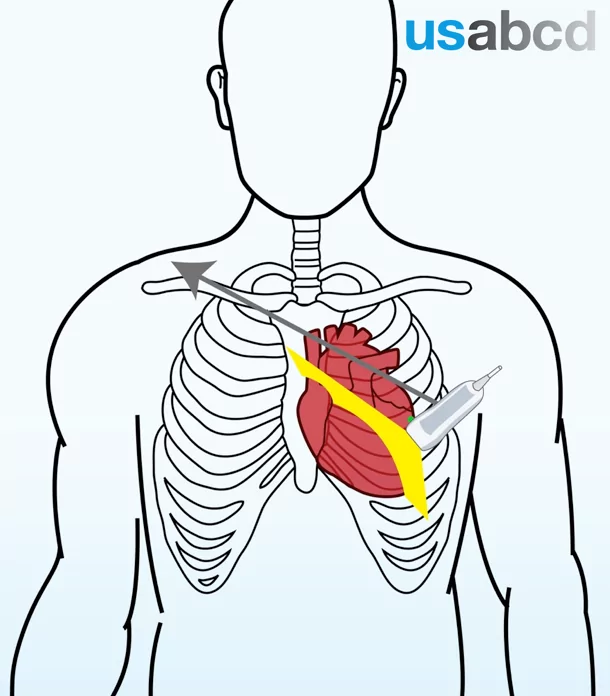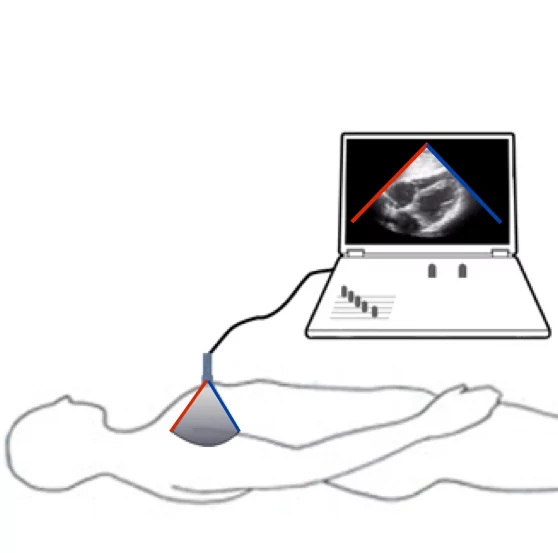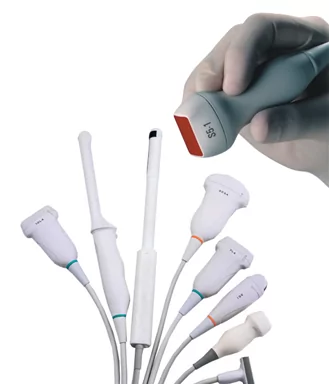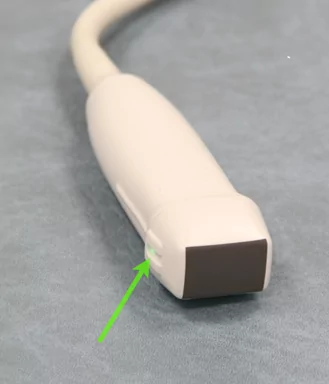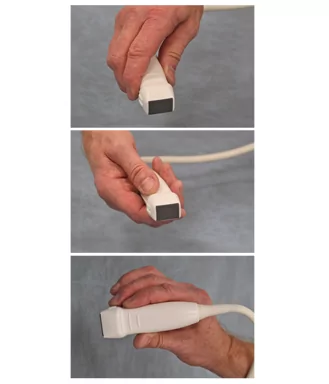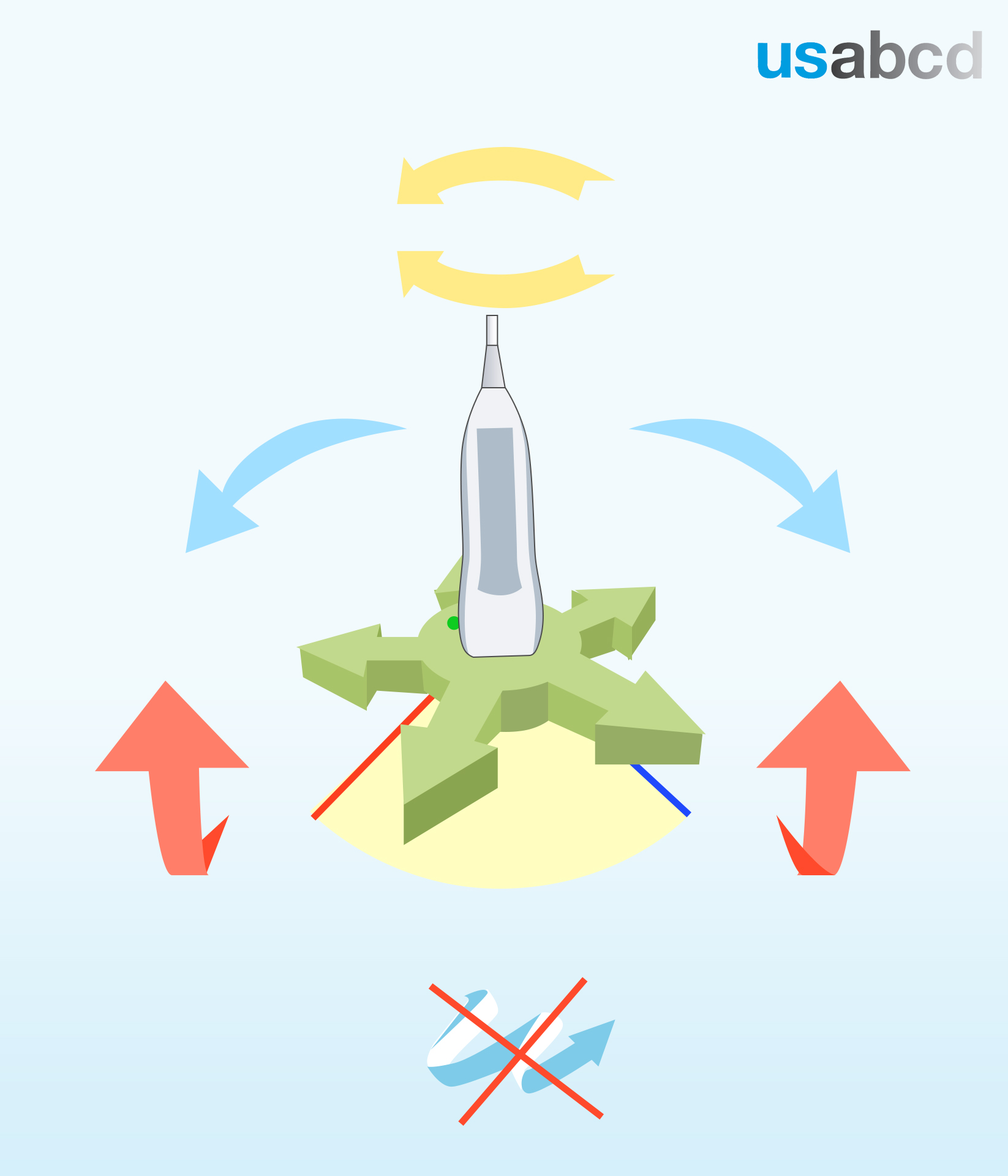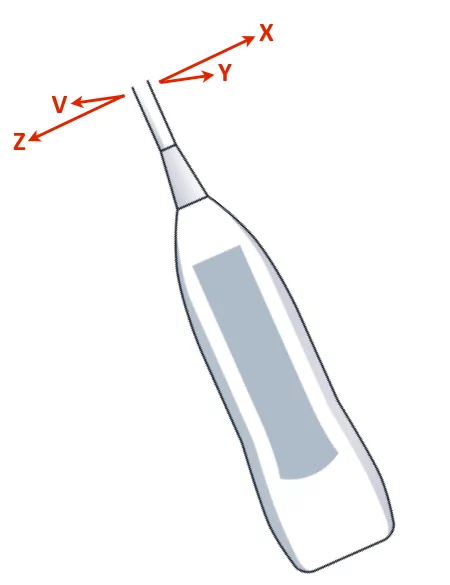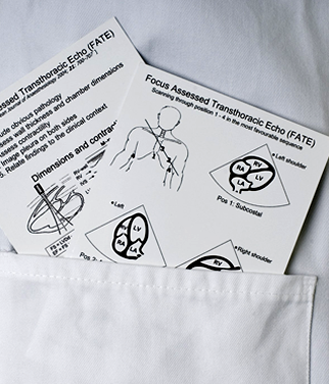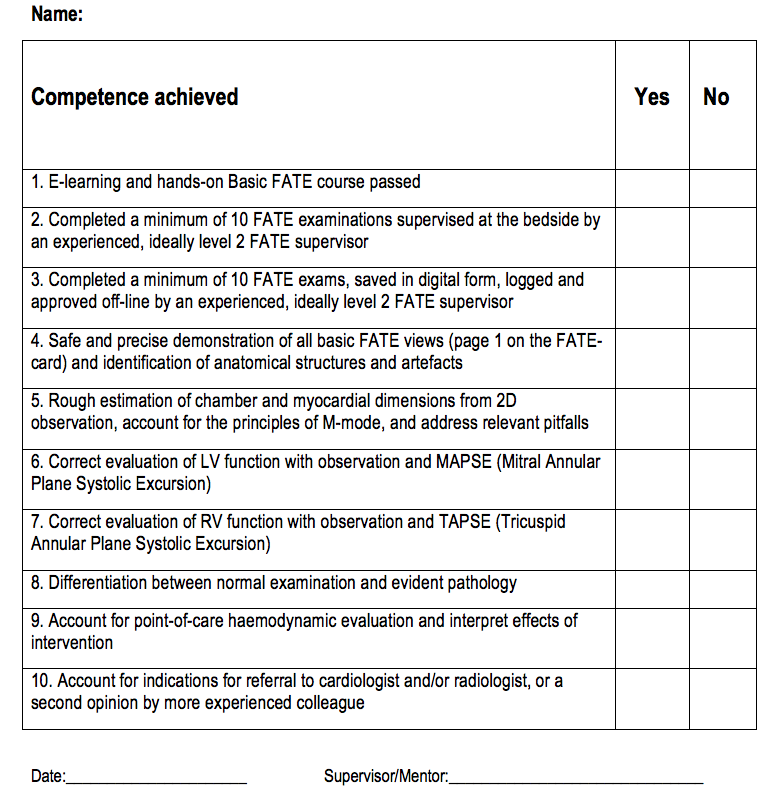Tilting is the most difficult transducer movement to communicate because it can take place in two planes
Tilting can be:
1. upwards or downwards
2. side to side
Reference according to the tail of the transducer and a secondary reference point is important during guidance in tilting of the probe
Example:
To obtain the correct LV parasternal short axis view the probe should often have an inclination with the chest wall of 20-30 degrees
You will therefore often hear the supervisor saying: “Lift the tail of the probe towards the right shoulder of the volunteer or patient”
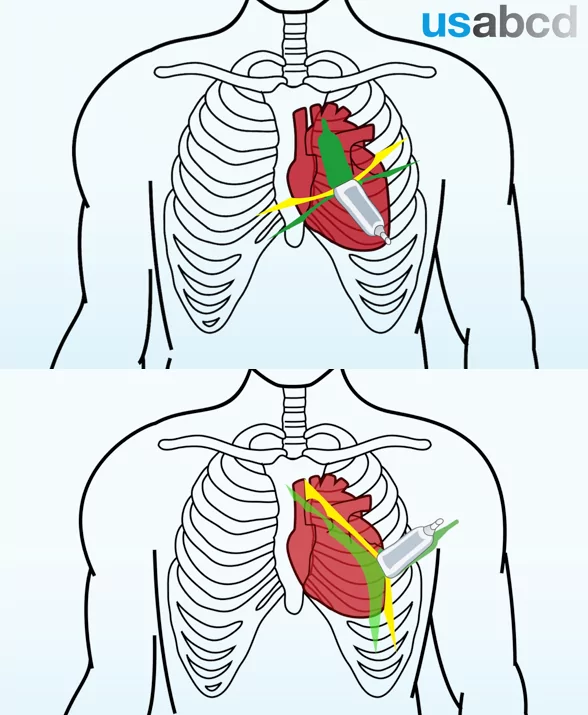
Bottom: tilting side to side

